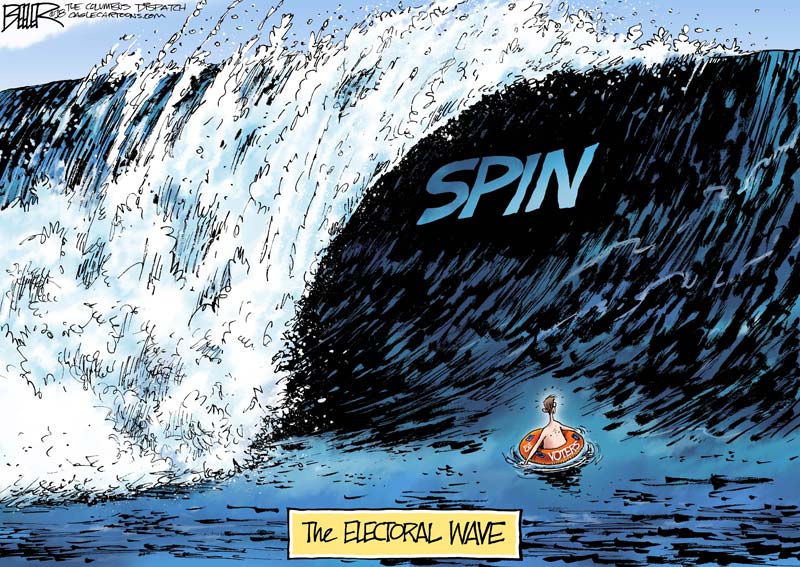
PITTSBURGH — Saturday morning in the city — s Strip District business neighborhood, about 100 people were gathered on the corner of Smallman and 21st streets, drinking coffee, cocoa, and hot cider.
They came from all ethnic and socioeconomic backgrounds and were all essentially strangers except for one common purpose: They were standing there on that brisk fall morning holding up signs in support of Donald J. Trump.
The mood was happy. Despite being masked up, they enjoyed banter with strangers who came up to chat or gave broad smiles to people who waved or beeped their horns as they passed by, including the ones who gave them a single-finger salute.
Minutes later, above the city — s skyline, an airplane flew overhead, dragging a large sign that read: WARNING TRUMP SUPERSPREADER EVENT MASK UP, a reference to a rally the president was hosting later on that evening in suburban Pittsburgh.
The conflicting messages from supporters for both candidates summed up the closing weeks of this election cycle succinctly; the Trump support was centered on community, being part of something bigger than yourself. The Biden message was about hating Trump and his supporters; delivering that message using an airplane to convey a socially distant message was clever and reinforced everything his candidacy has been about.
The polls show Joe Biden up big in the lead-up to the election here in Pennsylvania. Much of that support is about hating Trump; the polls also indicate we are heading for a national anti-Trump wave driven by COVID-19 and his comportment that could possibly take out 25 Republican House seats, five U.S. Senate seats, and state legislative majorities in places such as North Carolina, Georgia, and here in Pennsylvania.
Wave elections are often driven by one of two things: unhappiness for the current party in charge or the challenging party offering something new. Biden in polls is winning on the latter and bankrupt on the former.
In the 2006 Democratic midterm wave election, Democrats won on both. Republican, independent, and Democratic voters were fed up with the Republican elected officials who had held power in Congress for over a decade and had begun to misread why voters gave them power. Just two years earlier, Republicans had won the House and the Senate, and the Democratic Party seemed to be on the brink of implosion; it had no message, it was detached from the electorate, with each other, and its candidates were lackluster, and they were drowning in a sea of red.
Democrats came back and won in 2006 by recruiting centrist Democrats like Iraq War veteran Patrick Murphy in Bucks County, Pennsylvania, and delivering a simple, "shared values" message. Two years later, Barack Obama ran on "Hope and Change" and continued the Democratic wave.
Four years later, Republicans swept them out of the House in the 2010 midterms with a simple “where are the jobs” message, good candidates, and the fact that Democrats learned absolutely nothing from the Republicans' loss in 2006.
Four years later, the GOP took the Senate, won the presidency in 2016, and gained more Senate seats in 2018.
Democrats are confident they are about to create a sea of blue across the country Wednesday morning, assuming that Republicans have misread the electorate.
Center-right conservatives see things differently. They look around their towns and their middle-class suburbs and think the polls have missed them once again. Within hours, we will know if the president showing up in their hometowns and asking if he can earn their votes will outweigh a flood of Biden television ads that have saturated everything voters consume on radio, cable news, or smartphones.
For good or bad, the president makes it about him, flaws and all, and what he will do for the country. Biden, in contrast, travels with celebrities, like Lady Gaga, who, days after mocking western Pennsylvania voters as camo-wearing, beer-drinking yahoos in a tweet, is coming here to Pittsburgh to hold a drive-in "event" for Biden at Heinz Field.
When you have polls telling you one thing and reporting telling you something different, it really is hard to say if there is a true wave coming this way — the one thing that is certain is no matter who holds power, that power never lasts, not because of demographics but because of misreading people — s votes.
Demographic destiny is the argument political parties use when their message fails to resonate, and when you have misread what the voters need, they will turn to the party that is listening, or at least made a really great pitch that makes voters believe it is listening.
(COMMENT, BELOW)
Salena Zito is a CNN political analyst, and a staff reporter and columnist for the Washington Examiner. She reaches the Everyman and Everywoman through shoe-leather journalism, traveling from Main Street to the beltway and all places in between.


 Contact The Editor
Contact The Editor
 Articles By This Author
Articles By This Author